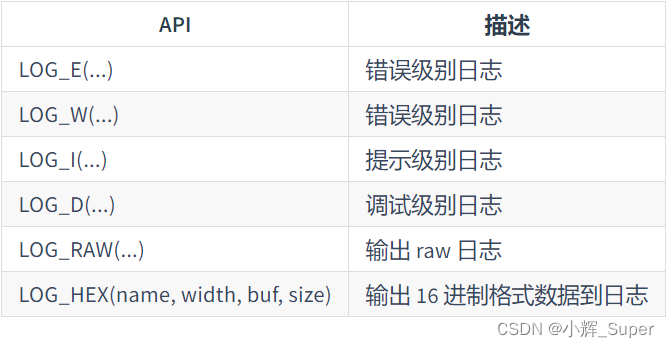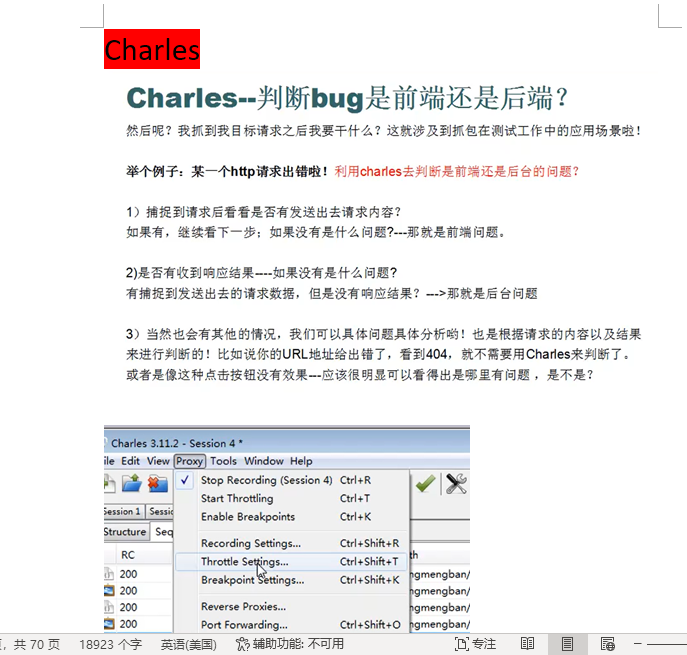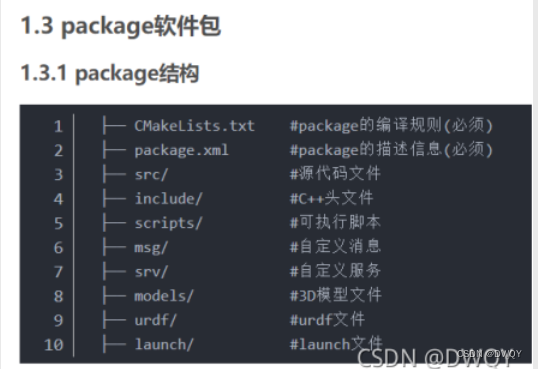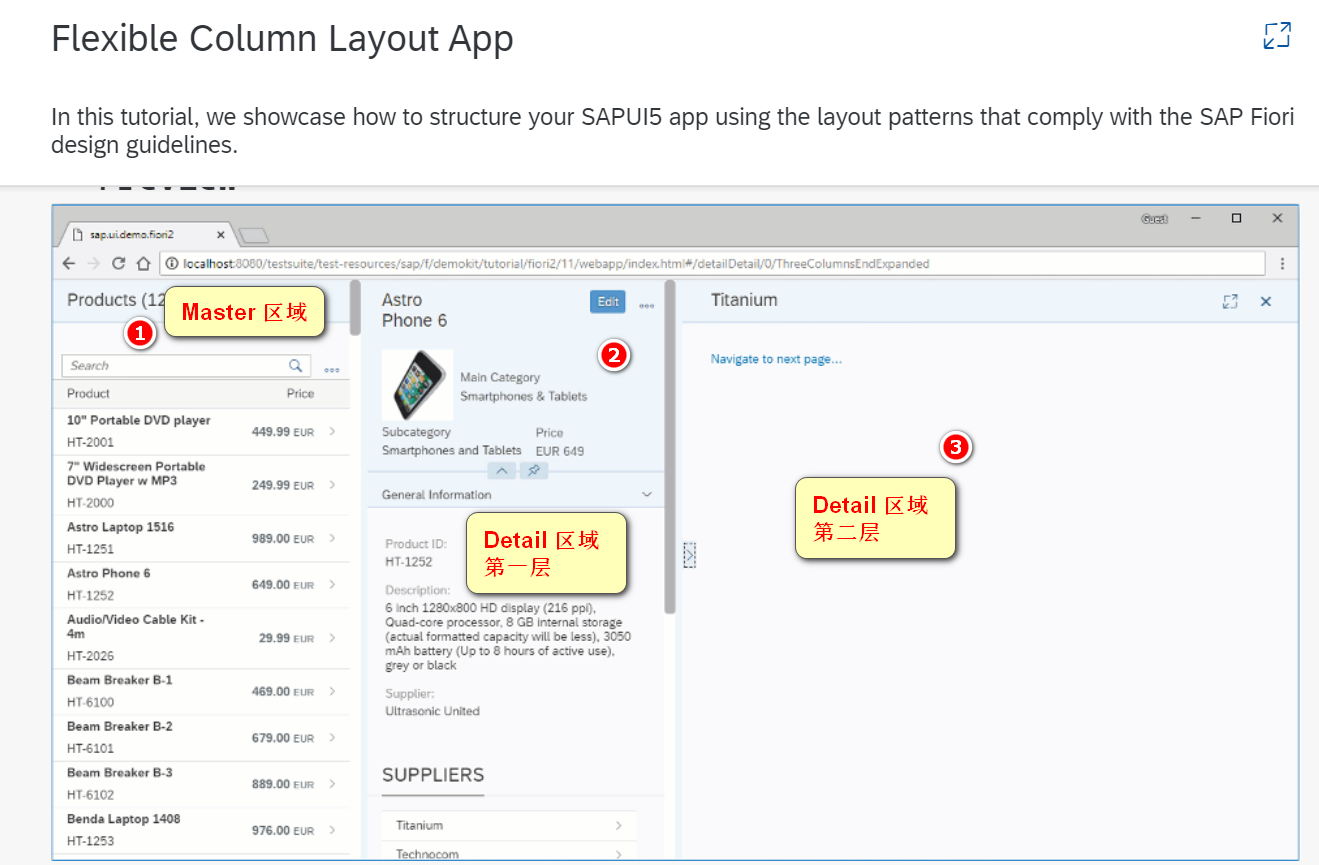当前位置:网站首页>Pandora IOT development board learning (RT thread) - Experiment 4 buzzer + motor experiment [key external interrupt] (learning notes)
Pandora IOT development board learning (RT thread) - Experiment 4 buzzer + motor experiment [key external interrupt] (learning notes)
2022-07-05 00:47:00 【Xiaohui_ Super】
This article code reference RT-Thread official BSP
List of articles
Experimental function
Routine source code :(main.c)
Functions realized by this experiment :4 Keys correspond to different functions ( Control the motor to turn left or right , Control buzzer off ), among 3 Keys are detected by external interruption ( Another key is detected by polling ), Most of the operation code is interrupting service ( Callback ) Function , The code of motor control and buzzer control is very simple , Is full of GPIO Write operations , It is not analyzed separately .
/* * Copyright (c) 2006-2018, RT-Thread Development Team * * SPDX-License-Identifier: Apache-2.0 * * Change Logs: * Date Author Notes * 2018-08-23 balanceTWK first implementation */
#include <rtthread.h>
#include <rtdevice.h>
#include <board.h>
#define DBG_TAG "main"
#define DBG_LVL DBG_LOG
#include <rtdbg.h>
enum
{
MOTOR_STOP,
MOTOR_LEFT,
MOTOR_RIGHT
};
/* Motor control */
void motor_ctrl(rt_uint8_t turn)
{
if (turn == MOTOR_STOP)
{
rt_pin_write(PIN_MOTOR_A, PIN_LOW);
rt_pin_write(PIN_MOTOR_B, PIN_LOW);
}
else if (turn == MOTOR_LEFT)
{
rt_pin_write(PIN_MOTOR_A, PIN_LOW);
rt_pin_write(PIN_MOTOR_B, PIN_HIGH);
}
else if (turn == MOTOR_RIGHT)
{
rt_pin_write(PIN_MOTOR_A, PIN_HIGH);
rt_pin_write(PIN_MOTOR_B, PIN_LOW);
}
else
{
LOG_D("err parameter ! Please enter 0-2.");
}
}
void beep_ctrl(rt_uint8_t on)
{
if (on)
{
rt_pin_write(PIN_BEEP, PIN_HIGH);
}
else
{
rt_pin_write(PIN_BEEP, PIN_LOW);
}
}
/* Interrupt callback */
void irq_callback(void *args)
{
rt_uint32_t sign = (rt_uint32_t)args;
switch (sign)
{
case PIN_KEY0:
motor_ctrl(MOTOR_LEFT);
LOG_D("KEY0 interrupt. motor turn left.");
break;
case PIN_KEY1:
motor_ctrl(MOTOR_RIGHT);
LOG_D("KEY1 interrupt. motor turn right.");
break;
case PIN_KEY2:
motor_ctrl(MOTOR_STOP);
LOG_D("KEY2 interrupt. motor stop.");
break;
default:
LOG_E("error sign= %d !", sign);
break;
}
}
int main(void)
{
unsigned int count = 1;
/* Set the key pin to the input mode */
rt_pin_mode(PIN_KEY0, PIN_MODE_INPUT_PULLUP);
rt_pin_mode(PIN_KEY1, PIN_MODE_INPUT_PULLUP);
rt_pin_mode(PIN_KEY2, PIN_MODE_INPUT_PULLUP);
rt_pin_mode(PIN_WK_UP, PIN_MODE_INPUT_PULLDOWN);
/* Set the motor control pin to the input mode */
rt_pin_mode(PIN_MOTOR_A, PIN_MODE_OUTPUT);
rt_pin_mode(PIN_MOTOR_B, PIN_MODE_OUTPUT);
/* Set buzzer pin to output mode */
rt_pin_mode(PIN_BEEP, PIN_MODE_OUTPUT);
/* Set the key interrupt mode and interrupt callback function */
rt_pin_attach_irq(PIN_KEY0, PIN_IRQ_MODE_FALLING, irq_callback, (void *)PIN_KEY0);
rt_pin_attach_irq(PIN_KEY1, PIN_IRQ_MODE_FALLING, irq_callback, (void *)PIN_KEY1);
rt_pin_attach_irq(PIN_KEY2, PIN_IRQ_MODE_FALLING, irq_callback, (void *)PIN_KEY2);
/* To interrupt */
rt_pin_irq_enable(PIN_KEY0, PIN_IRQ_ENABLE);
rt_pin_irq_enable(PIN_KEY1, PIN_IRQ_ENABLE);
rt_pin_irq_enable(PIN_KEY2, PIN_IRQ_ENABLE);
while (count > 0)
{
if (rt_pin_read(PIN_WK_UP) == PIN_HIGH)
{
rt_thread_mdelay(50);
if (rt_pin_read(PIN_WK_UP) == PIN_HIGH)
{
LOG_D("WK_UP pressed. beep on.");
beep_ctrl(1);
}
}
else
{
beep_ctrl(0);
}
rt_thread_mdelay(10);
count++;
}
return 0;
}
Code analysis
rt_pin_mode()
The function is to GPIO Pin The initialization , Defined as
/* RT-Thread Hardware PIN APIs */
void rt_pin_mode(rt_base_t pin, rt_base_t mode)
{
RT_ASSERT(_hw_pin.ops != RT_NULL);
_hw_pin.ops->pin_mode(&_hw_pin.parent, pin, mode);
}
Parameters pin It's a rt_base_t Variable (long), Below GET_PIN() yes STM32 Of pin Value macro definition , Fill in capital letters for the first parameter , The second parameter is filled with numbers .
#define GET_PIN(PORTx,PIN) (rt_base_t)((16 * ( ((rt_base_t)__STM32_PORT(PORTx) - (rt_base_t)GPIOA)/(0x0400UL) )) + PIN)
#define __STM32_PORT(port) GPIO##port // ## Is a character connector , If port by A, said GPIOA
For example, in the experiment
#define PIN_LED_R GET_PIN(E, 7), Express GPIOE GPIO_Pin7
at present RT-Thread Supported pin operating modes include :
#define PIN_MODE_OUTPUT 0x00 /* Output */
#define PIN_MODE_INPUT 0x01 /* Input */
#define PIN_MODE_INPUT_PULLUP 0x02 /* Pull up input */
#define PIN_MODE_INPUT_PULLDOWN 0x03 /* Drop down input */
#define PIN_MODE_OUTPUT_OD 0x04 /* Open drain output */
stay bsp Of drv_gpio.c In file , There is a bottom layer GPIO drive , Here is STM32 Of GPIO Driver function of mode setting ( You should be familiar with , Just use HAL Library written GPIO Initialization code )
static void stm32_pin_mode(rt_device_t dev, rt_base_t pin, rt_base_t mode)
{
const struct pin_index *index;
GPIO_InitTypeDef GPIO_InitStruct;
index = get_pin(pin);
if (index == RT_NULL)
{
return;
}
/* Configure GPIO_InitStructure */
GPIO_InitStruct.Pin = index->pin;
GPIO_InitStruct.Mode = GPIO_MODE_OUTPUT_PP;
GPIO_InitStruct.Pull = GPIO_NOPULL;
GPIO_InitStruct.Speed = GPIO_SPEED_FREQ_HIGH;
if (mode == PIN_MODE_OUTPUT)
{
/* output setting */
GPIO_InitStruct.Mode = GPIO_MODE_OUTPUT_PP;
GPIO_InitStruct.Pull = GPIO_NOPULL;
}
else if (mode == PIN_MODE_INPUT)
{
/* input setting: not pull. */
GPIO_InitStruct.Mode = GPIO_MODE_INPUT;
GPIO_InitStruct.Pull = GPIO_NOPULL;
}
else if (mode == PIN_MODE_INPUT_PULLUP)
{
/* input setting: pull up. */
GPIO_InitStruct.Mode = GPIO_MODE_INPUT;
GPIO_InitStruct.Pull = GPIO_PULLUP;
}
else if (mode == PIN_MODE_INPUT_PULLDOWN)
{
/* input setting: pull down. */
GPIO_InitStruct.Mode = GPIO_MODE_INPUT;
GPIO_InitStruct.Pull = GPIO_PULLDOWN;
}
else if (mode == PIN_MODE_OUTPUT_OD)
{
/* output setting: od. */
GPIO_InitStruct.Mode = GPIO_MODE_OUTPUT_OD;
GPIO_InitStruct.Pull = GPIO_NOPULL;
}
HAL_GPIO_Init(index->gpio, &GPIO_InitStruct);
}
rt_pin_attach_irq()
This is a RT-Thread Break binding ( register ) function , It will call the corresponding functions in the current platform driver .
rt_err_t rt_pin_attach_irq(rt_int32_t pin, rt_uint32_t mode,
void (*hdr)(void *args), void *args)
{
RT_ASSERT(_hw_pin.ops != RT_NULL);
if(_hw_pin.ops->pin_attach_irq)
{
return _hw_pin.ops->pin_attach_irq(&_hw_pin.parent, pin, mode, hdr, args);
}
return RT_ENOSYS;
}
bsp drive (drv_gpio.c) It defines STM32 Interrupt registration function of stm32_pin_attach_irq():
static rt_err_t stm32_pin_attach_irq(struct rt_device *device, rt_int32_t pin,
rt_uint32_t mode, void (*hdr)(void *args), void *args)
{
const struct pin_index *index;
rt_base_t level;
rt_int32_t irqindex = -1;
index = get_pin(pin);
if (index == RT_NULL)
{
return RT_ENOSYS;
}
irqindex = bit2bitno(index->pin);
if (irqindex < 0 || irqindex >= ITEM_NUM(pin_irq_map))
{
return RT_ENOSYS;
}
level = rt_hw_interrupt_disable();
if (pin_irq_hdr_tab[irqindex].pin == pin &&
pin_irq_hdr_tab[irqindex].hdr == hdr &&
pin_irq_hdr_tab[irqindex].mode == mode &&
pin_irq_hdr_tab[irqindex].args == args)
{
rt_hw_interrupt_enable(level);
return RT_EOK;
}
if (pin_irq_hdr_tab[irqindex].pin != -1)
{
rt_hw_interrupt_enable(level);
return RT_EBUSY;
}
pin_irq_hdr_tab[irqindex].pin = pin;
pin_irq_hdr_tab[irqindex].hdr = hdr;
pin_irq_hdr_tab[irqindex].mode = mode;
pin_irq_hdr_tab[irqindex].args = args;
rt_hw_interrupt_enable(level);
return RT_EOK;
}
attach The principle of function is very simple , It is to store the current interrupt information in an interrupt table in the driver code , The structure of the interrupt table is defined as :
struct rt_pin_irq_hdr
{
rt_int16_t pin;
rt_uint16_t mode;
void (*hdr)(void *args); // Interrupt callback function
void *args;
};
rt_pin_irq_enable()
This is a RT-Thread Kernel pin Interrupt enable function , The actual operation is the platform driven corresponding function ,
rt_err_t rt_pin_irq_enable(rt_base_t pin, rt_uint32_t enabled)
{
RT_ASSERT(_hw_pin.ops != RT_NULL);
if(_hw_pin.ops->pin_irq_enable)
{
return _hw_pin.ops->pin_irq_enable(&_hw_pin.parent, pin, enabled);
}
return RT_ENOSYS;
}
STM32 The interrupt enabling function in the platform driver is as follows , The amount of code is still very large (HAL Configuration of external interrupts in the Library , Due to the consideration of different parameter options , So it's a lot of code ):
static rt_err_t stm32_pin_irq_enable(struct rt_device *device, rt_base_t pin,
rt_uint32_t enabled)
{
const struct pin_index *index;
const struct pin_irq_map *irqmap;
rt_base_t level;
rt_int32_t irqindex = -1;
GPIO_InitTypeDef GPIO_InitStruct;
index = get_pin(pin);
if (index == RT_NULL)
{
return RT_ENOSYS;
}
if (enabled == PIN_IRQ_ENABLE)
{
irqindex = bit2bitno(index->pin);
if (irqindex < 0 || irqindex >= ITEM_NUM(pin_irq_map))
{
return RT_ENOSYS;
}
level = rt_hw_interrupt_disable();
if (pin_irq_hdr_tab[irqindex].pin == -1)
{
rt_hw_interrupt_enable(level);
return RT_ENOSYS;
}
irqmap = &pin_irq_map[irqindex];
/* Configure GPIO_InitStructure */
GPIO_InitStruct.Pin = index->pin;
GPIO_InitStruct.Speed = GPIO_SPEED_FREQ_HIGH;
switch (pin_irq_hdr_tab[irqindex].mode)
{
case PIN_IRQ_MODE_RISING:
GPIO_InitStruct.Pull = GPIO_PULLDOWN;
GPIO_InitStruct.Mode = GPIO_MODE_IT_RISING;
break;
case PIN_IRQ_MODE_FALLING:
GPIO_InitStruct.Pull = GPIO_PULLUP;
GPIO_InitStruct.Mode = GPIO_MODE_IT_FALLING;
break;
case PIN_IRQ_MODE_RISING_FALLING:
GPIO_InitStruct.Pull = GPIO_NOPULL;
GPIO_InitStruct.Mode = GPIO_MODE_IT_RISING_FALLING;
break;
}
HAL_GPIO_Init(index->gpio, &GPIO_InitStruct);
HAL_NVIC_SetPriority(irqmap->irqno, 5, 0);
HAL_NVIC_EnableIRQ(irqmap->irqno);
pin_irq_enable_mask |= irqmap->pinbit;
rt_hw_interrupt_enable(level);
}
else if (enabled == PIN_IRQ_DISABLE)
{
irqmap = get_pin_irq_map(index->pin);
if (irqmap == RT_NULL)
{
return RT_ENOSYS;
}
level = rt_hw_interrupt_disable();
HAL_GPIO_DeInit(index->gpio, index->pin);
pin_irq_enable_mask &= ~irqmap->pinbit;
#if defined(SOC_SERIES_STM32F0) || defined(SOC_SERIES_STM32G0)
if (( irqmap->pinbit>=GPIO_PIN_0 )&&( irqmap->pinbit<=GPIO_PIN_1 ))
{
if(!(pin_irq_enable_mask&(GPIO_PIN_0|GPIO_PIN_1)))
{
HAL_NVIC_DisableIRQ(irqmap->irqno);
}
}
else if (( irqmap->pinbit>=GPIO_PIN_2 )&&( irqmap->pinbit<=GPIO_PIN_3 ))
{
if(!(pin_irq_enable_mask&(GPIO_PIN_2|GPIO_PIN_3)))
{
HAL_NVIC_DisableIRQ(irqmap->irqno);
}
}
else if (( irqmap->pinbit>=GPIO_PIN_4 )&&( irqmap->pinbit<=GPIO_PIN_15 ))
{
if(!(pin_irq_enable_mask&(GPIO_PIN_4|GPIO_PIN_5|GPIO_PIN_6|GPIO_PIN_7|GPIO_PIN_8|GPIO_PIN_9|
GPIO_PIN_10|GPIO_PIN_11|GPIO_PIN_12|GPIO_PIN_13|GPIO_PIN_14|GPIO_PIN_15)))
{
HAL_NVIC_DisableIRQ(irqmap->irqno);
}
}
else
{
HAL_NVIC_DisableIRQ(irqmap->irqno);
}
#else
if (( irqmap->pinbit>=GPIO_PIN_5 )&&( irqmap->pinbit<=GPIO_PIN_9 ))
{
if(!(pin_irq_enable_mask&(GPIO_PIN_5|GPIO_PIN_6|GPIO_PIN_7|GPIO_PIN_8|GPIO_PIN_9)))
{
HAL_NVIC_DisableIRQ(irqmap->irqno);
}
}
else if (( irqmap->pinbit>=GPIO_PIN_10 )&&( irqmap->pinbit<=GPIO_PIN_15 ))
{
if(!(pin_irq_enable_mask&(GPIO_PIN_10|GPIO_PIN_11|GPIO_PIN_12|GPIO_PIN_13|GPIO_PIN_14|GPIO_PIN_15)))
{
HAL_NVIC_DisableIRQ(irqmap->irqno);
}
}
else
{
HAL_NVIC_DisableIRQ(irqmap->irqno);
}
#endif
rt_hw_interrupt_enable(level);
}
else
{
return -RT_ENOSYS;
}
return RT_EOK;
}
Interrupt handling function
The interrupt handler is already in main.c In the definition of , It's not shown here .
When an external interrupt is triggered , Will trigger HAL Library interrupt function HAL_GPIO_EXTI_Callback(), and STM32 bsp In this function pin_irq_hdr(bit2bitno(GPIO_Pin));, This function will call the corresponding callback function according to the interrupt number assigned during interrupt registration .
HAL_GPIO_EXTI_Callback()
#if defined(SOC_SERIES_STM32G0)
void HAL_GPIO_EXTI_Rising_Callback(uint16_t GPIO_Pin)
{
pin_irq_hdr(bit2bitno(GPIO_Pin));
}
void HAL_GPIO_EXTI_Falling_Callback(uint16_t GPIO_Pin)
{
pin_irq_hdr(bit2bitno(GPIO_Pin));
}
#else
void HAL_GPIO_EXTI_Callback(uint16_t GPIO_Pin)
{
pin_irq_hdr(bit2bitno(GPIO_Pin));
}
#endif
pin_irq_hdr()
rt_inline void pin_irq_hdr(int irqno)
{
if (pin_irq_hdr_tab[irqno].hdr)
{
pin_irq_hdr_tab[irqno].hdr(pin_irq_hdr_tab[irqno].args);
}
}
rt_pin_read()
GPIO Read function , Here is the definition of the function :
int rt_pin_read(rt_base_t pin)
{
RT_ASSERT(_hw_pin.ops != RT_NULL);
return _hw_pin.ops->pin_read(&_hw_pin.parent, pin);
}
and GPIO The mode configuration function is similar , It will call the corresponding function in the underlying driver , The underlying function is through HAL_GPIO_ReadPin() To get GPIO The level of .
static int stm32_pin_read(rt_device_t dev, rt_base_t pin)
{
int value;
const struct pin_index *index;
value = PIN_LOW;
index = get_pin(pin);
if (index == RT_NULL)
{
return value;
}
value = HAL_GPIO_ReadPin(index->gpio, index->pin);
return value;
}
rt_thread_mdelay()
This is a RT-Thread Millisecond delay function , The definition is as follows :
rt_err_t rt_thread_mdelay(rt_int32_t ms)
{
rt_tick_t tick;
// Get the required clock beat
tick = rt_tick_from_millisecond(ms);
// Block the corresponding beat time
return rt_thread_sleep(tick);
}
rt_tick_from_millisecond()
/** * Work out ms The number of corresponding clock beats * * * @param ms the specified millisecond * - Negative Number wait forever * - Zero not wait * - Max 0x7fffffff * * @return the calculated tick */
rt_tick_t rt_tick_from_millisecond(rt_int32_t ms)
{
rt_tick_t tick;
if (ms < 0)
{
tick = (rt_tick_t)RT_WAITING_FOREVER; // -1
}
else
{
// take “ Beats per second ” / 1000 * ms, Calculate the corresponding second beats
tick = RT_TICK_PER_SECOND * (ms / 1000);
// Plus less than 1000ms Part of the beat number
tick += (RT_TICK_PER_SECOND * (ms % 1000) + 999) / 1000;
}
/* return the calculated tick */
return tick;
}
rt_thread_sleep()
Thread sleep ( Hang up ) function , The parameter is the number of system beats :
/** * This function can make the current thread hang for a period of time ( from tick decision ) * * @param tick the sleep ticks * * @return RT_EOK */
rt_err_t rt_thread_sleep(rt_tick_t tick)
{
register rt_base_t temp;
struct rt_thread *thread;
/* set to current thread */
thread = rt_thread_self();
RT_ASSERT(thread != RT_NULL);
RT_ASSERT(rt_object_get_type((rt_object_t)thread) == RT_Object_Class_Thread);
/* disable interrupt */
temp = rt_hw_interrupt_disable();
/* suspend thread */
rt_thread_suspend(thread);
/* reset the timeout of thread timer and start it */
rt_timer_control(&(thread->thread_timer), RT_TIMER_CTRL_SET_TIME, &tick);
rt_timer_start(&(thread->thread_timer));
/* enable interrupt */
rt_hw_interrupt_enable(temp);
rt_schedule();
/* clear error number of this thread to RT_EOK */
if (thread->error == -RT_ETIMEOUT)
thread->error = RT_EOK;
return RT_EOK;
}
LOG_D()
In this study , We can LOG_D() As rt_kprintf(),
#define dbg_log_line(lvl, color_n, fmt, ...) \ do \ {
\ _DBG_LOG_HDR(lvl, color_n); \ rt_kprintf(fmt, ##__VA_ARGS__); \ _DBG_LOG_X_END; \ } \ while (0)
LOG_D yes RT-Thread A log printing function in the kernel , Details visible :《RT-Thread Document center ——ulog journal 》
RT-Thread Log API Include :

rt_pin_write()
GPIO Write function , Here is the definition of the function ,
void rt_pin_write(rt_base_t pin, rt_base_t value)
{
RT_ASSERT(_hw_pin.ops != RT_NULL);
_hw_pin.ops->pin_write(&_hw_pin.parent, pin, value);
}
and GPIO The mode configuration function is similar , It will call the corresponding function in the underlying driver , The underlying function is through HAL_GPIO_WritePin() To complete GPIO Pin Modification of .
static void stm32_pin_write(rt_device_t dev, rt_base_t pin, rt_base_t value)
{
const struct pin_index *index;
index = get_pin(pin);
if (index == RT_NULL)
{
return;
}
HAL_GPIO_WritePin(index->gpio, index->pin, (GPIO_PinState)value);
}
边栏推荐
- Learn C language from scratch day 024
- IT转测试岗,从迷茫到坚定我究竟付出了什么?
- [Yocto RM]10 - Images
- Skills in analyzing the trend chart of London Silver
- 【selenium自动化】常用注解
- P4408 [NOI2003] 逃学的小孩(树的直径)
- [STM32] (I) overview and GPIO introduction
- Summary of week 22-07-02
- skimage: imread & imsave & imshow
- Learning of basic amplification circuit
猜你喜欢
Date time type and format in MySQL
![[paper reading] Tun det: a novel network for meridian ultra sound nodule detection](/img/25/e2366cabf00e55664d16455a6049e0.png)
[paper reading] Tun det: a novel network for meridian ultra sound nodule detection
![[论文阅读] TUN-Det: A Novel Network for Thyroid Ultrasound Nodule Detection](/img/25/e2366cabf00e55664d16455a6049e0.png)
[论文阅读] TUN-Det: A Novel Network for Thyroid Ultrasound Nodule Detection

College degree, what about 33 year old Baoma? I still sell and test, and my monthly income is 13K+

各大主流编程语言性能PK,结果出乎意料

初识ROS

SAP UI5 应用的主-从-从(Master-Detail-Detail)布局模式的实现步骤

107. SAP UI5 OverflowToolbar 容器控件以及 resize 事件处理的一些细节介绍

Hill sort of sorting

Les phénomènes de « salaire inversé » et de « remplacement des diplômés » indiquent que l'industrie des tests a...
随机推荐
PermissionError: [Errno 13] Permission denied: ‘data. csv‘
全网最全正则实战指南,拿走不谢
leetcode518,377
Apifox (postman + swagger + mock + JMeter), an artifact of full stack development and efficiency improvement
[STM32] (I) overview and GPIO introduction
大专学历,33岁宝妈又怎样?我照样销售转测试,月入13k+
Distributed base theory
JS how to realize array to tree
各大主流编程语言性能PK,结果出乎意料
人生无常,大肠包小肠, 这次真的可以回家看媳妇去了。。。
Summary of the function and usage of const, volatile and restrict
[论文阅读] TUN-Det: A Novel Network for Thyroid Ultrasound Nodule Detection
Netcore3.1 JSON web token Middleware
1189. Maximum number of "balloons"
【C】(笔试题)指针与数组,指针
P4408 [noi2003] truant children (tree diameter)
SAP UI5 应用的主-从-从(Master-Detail-Detail)布局模式的实现步骤
26.2 billion! These universities in Guangdong Province have received heavy support
华为百万聘请数据治理专家!背后的千亿市场值得关注
他做国外LEAD,用了一年时间,把所有房贷都还清了
